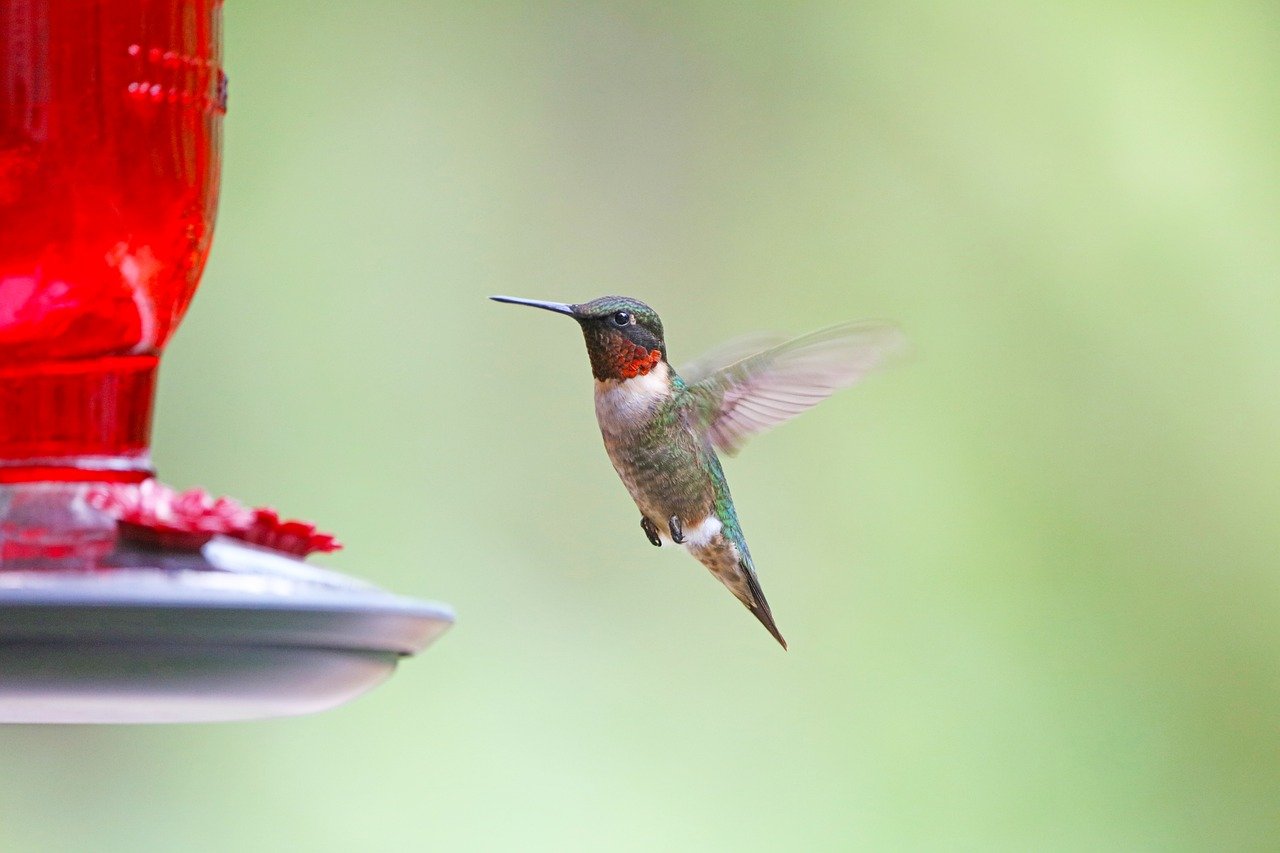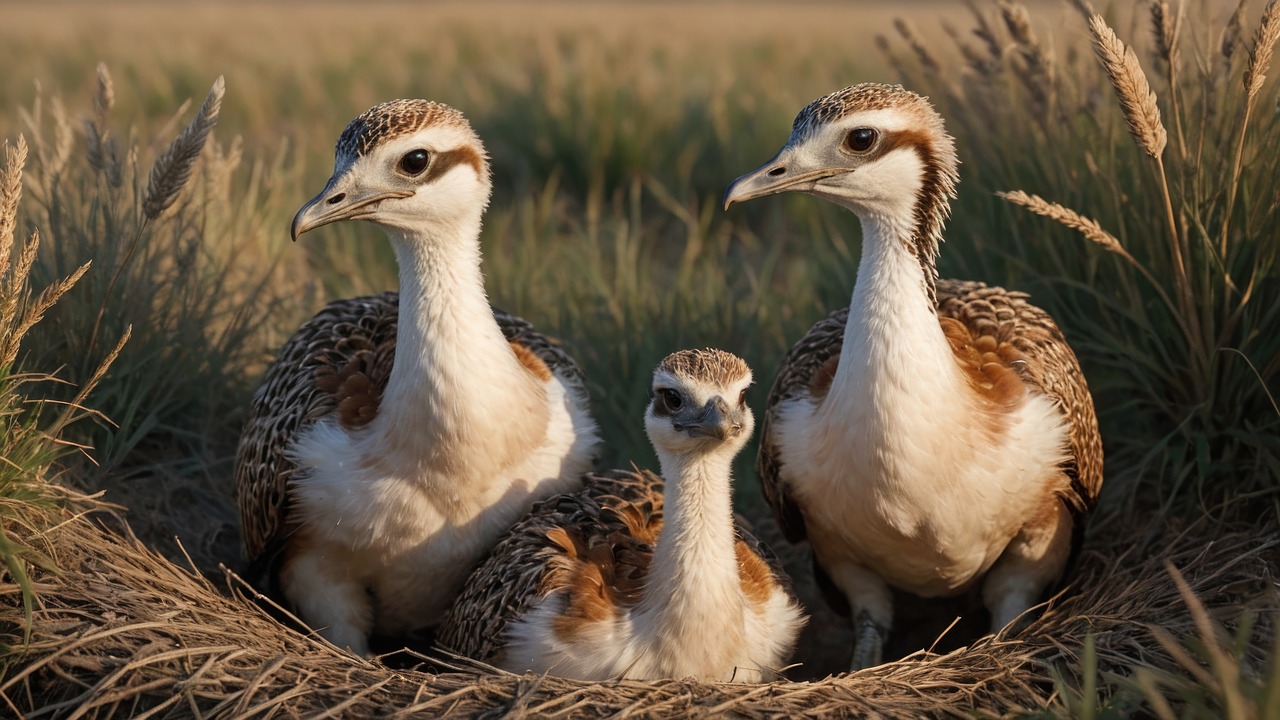Birds have long captivated human interest with their diverse colors, sizes, and behaviors. The selection of the top 10 most amazing birds was based on a careful evaluation of their unique characteristics and significance in the avian world. Throughout this post, readers can expect to delve into the fascinating physical features, behaviors, and diets of these extraordinary creatures. Prepare to be amazed by the wonders of nature as we explore some of the most interesting birds that inhabit our planet.
The Majestic Harpy Eagle

Harpy Eagles, known for their impressive size and distinctive features, are truly remarkable creatures in the avian world. These birds are among the largest and most powerful eagles globally, showcasing their dominance in the skies.
Physical Characteristics
Size and Wingspan
Harpy Eagles boast a wingspan that surpasses many full-grown humans' height, emphasizing their grandeur. These majestic birds have rear talons measuring about 3-4 inches long, equivalent to the claws of a grizzly bear.
Distinctive Features
One of the most striking features of Harpy Eagles is their significant size difference based on gender. The female "harpy" eagle is nearly double the size of the male counterpart, showcasing an intriguing aspect of their biology.
Behavior and Diet
Hunting Techniques
When it comes to hunting, Harpy Eagles exhibit unparalleled skills. Their legs can be as thick as a small child's wrist, underscoring their strength and agility in capturing prey with precision.
Typical Prey
Harpy Eagles are known to prey on various animals in their habitat, demonstrating their position as apex predators. Their curved back talons, larger than grizzly bear claws at 5 inches long, aid them in securing meals efficiently.
The Colorful Scarlet Macaw

Scarlet Macaws, with their vibrant red, yellow, and blue plumage, are truly a sight to behold. These interesting birds display a mesmerizing array of colors that adorn their feathers, making them stand out in the lush green canopies they call home.
Physical Characteristics
Plumage Colors
The Scarlet Macaw's feathers exhibit a stunning blend of reds, yellows, blues, and greens. This colorful combination serves as both camouflage and attraction for these magnificent creatures.
Size and Wingspan
Measuring approximately 81-96 centimeters in length, the Scarlet Macaw boasts an impressive wingspan that can reach up to 125-140 centimeters. These dimensions allow them to soar gracefully through the skies with unparalleled elegance.
Behavior and Diet
Social Structure
Scarlet Macaws are highly social birds known for their strong family bonds and communal behaviors. They often form tight-knit groups within their habitat, engaging in various activities that strengthen their relationships.
Typical Diet
The diet of Scarlet Macaws primarily consists of fruits, nuts, seeds, and occasionally insects. Their powerful beaks enable them to crack open hard shells with ease, showcasing their adaptability in foraging for food sources.
The Fast Peregrine Falcon

The Peregrine Falcon, renowned for its incredible speed and agility, is a fascinating bird that commands attention in the avian realm.
Physical Characteristics
Size and Wingspan
With a sleek body and sharp beak, the Peregrine Falcon exudes power in its compact frame. It boasts a wingspan that can reach up to 3.4 feet, enabling it to soar through the skies with unmatched grace.
Distinctive Features
Its keen eyesight and aerodynamic shape set the Peregrine Falcon apart from other birds of prey. This remarkable creature is built for speed, with streamlined feathers that reduce air resistance during high-speed pursuits.
Behavior and Diet
Hunting Techniques
In pursuit of prey, the Peregrine Falcon employs a strategic hunting technique known as "stooping." Soaring high above its target, it dives at speeds exceeding 240 miles per hour, executing precise mid-air maneuvers to catch unsuspecting prey.
Typical Prey
Peregrine Falcons primarily prey on smaller birds such as pigeons and ducks. Their swift aerial assaults and powerful talons allow them to swiftly capture their quarry mid-flight, showcasing their unparalleled hunting prowess.
The Smallest Bee Hummingbird

Physical Characteristics
Size and Wingspan
-
Bee Hummingbirds, the tiniest birds globally, measure a mere two and a quarter inches in length, making them smaller than some insects.
-
These delicate creatures weigh less than two grams on average, showcasing their incredibly lightweight build.
Distinctive Features
-
With males reaching lengths of 5.51 cm and females growing up to 6.12 cm, Bee Hummingbirds are akin in size to large bees.
-
Their specially adapted flight muscles allow them to perform intricate aerial maneuvers with precision and grace.
-
Sporting iridescent feathers, these tiny birds shimmer in the sunlight, adding a touch of enchantment to their appearance.
The Largest Ostrich

Physical Characteristics
Size and Wingspan
-
The ostrich, the largest bird on Earth, stands tall with an impressive height that can reach up to 9 feet.
-
Its wingspan, despite being flightless, spans around 6 to 9 feet, showcasing its massive size.
Distinctive Features
-
Ostriches possess long necks that aid in scanning vast landscapes for potential threats or food sources.
-
Their powerful legs are not only built for speed but also serve as formidable weapons against predators.
Behavior and Diet
Social Structure
-
Ostriches exhibit a unique social structure where they live in groups led by a dominant male and female.
-
These communal birds engage in cooperative behaviors such as nesting together and taking turns to watch for danger.
Typical Diet
-
Their diet mainly consists of plants like roots, seeds, and leaves found in the arid regions they inhabit.
-
Ostriches are omnivores known to occasionally consume insects and small reptiles when vegetation is scarce.
The Heaviest Flying Kori Bustard

Physical Characteristics
Size and Wingspan
-
The Kori Bustard, a majestic bird renowned for its impressive size, stands tall with a height that can reach up to 4 feet.
-
Its wingspan spans around 7 to 9 feet, showcasing its massive presence in the skies.
Distinctive Features
-
Similar to other large birds like ostriches and emus, the Kori Bustard possesses a robust body shape that exudes strength and resilience.
-
Notably, the Kori Bustard's foreneck feathering extends higher up compared to similar species, giving it a unique appearance in the avian world.
Behavior and Diet
Feeding Habits
-
The Kori Bustard is primarily known for its ground-foraging habits, scouring the savannas and grasslands for insects and small reptiles.
-
With keen eyesight and agile movements, these birds adeptly hunt for their prey amidst the vast landscapes they inhabit.
Typical Diet
-
Their diet consists of a variety of insects such as beetles, grasshoppers, and caterpillars, providing them with essential nutrients for survival.
-
Additionally, Kori Bustards have been observed consuming small reptiles like lizards when seeking alternative food sources in their natural habitat.
The Longest Migrant Arctic Tern

Physical Characteristics
Size and Wingspan
-
Arctic Terns are slender birds with long, angular wings that give them a graceful appearance in flight.
-
These remarkable creatures have a wingspan that extends up to 25.6 inches, allowing them to traverse great distances with ease.
Distinctive Features
-
With their small round heads, steep foreheads, and extremely short legs, Arctic Terns possess unique physical characteristics that set them apart from other avian species.
-
Breeding adults showcase a deeply forked tail, adding to their distinctive charm and elegance while soaring through the skies.
Behavior and Diet
Migration Patterns
-
Arctic Terns are renowned for undertaking one of the longest migrations in the avian world, traveling from their breeding grounds in the Arctic to their wintering areas near Antarctica.
-
This incredible journey spans over 50,000 miles round trip annually, showcasing the endurance and navigational skills of these impressive migrants.
Typical Diet
-
When it comes to feeding habits, Arctic Terns primarily prey on small fish, aquatic insects, and crustaceans found along coastal waters during their migration.
-
Their plunge dives into the water are a sight to behold as they skillfully capture their prey with precision and agility.
The Biggest Wingspan Wandering Albatross

Physical Characteristics
Size and Wingspan
-
The Wandering Albatross, known for its impressive wingspan, boasts a remarkable size that sets it apart from other avian species.
-
With wings stretching up to 11 feet in length, these majestic birds exhibit unparalleled grace and efficiency in flight.
Distinctive Features
-
The Wandering Albatross showcases distinctive physical traits that contribute to its exceptional aerial abilities.
-
Their long, slender wings enable them to glide effortlessly for hours without flapping, showcasing their mastery of soaring through the open skies.
Behavior and Diet
Feeding Habits
-
Wandering Albatrosses are skilled marine predators that rely on their keen eyesight to spot prey from great heights.
-
They use a technique called dynamic soaring to cover vast distances over the ocean while hunting for squid, fish, and other marine delicacies.
Typical Diet
-
Their diet primarily consists of squid and fish obtained through surface-seizing or shallow dives into the water.
-
These magnificent birds play a crucial role in maintaining the marine ecosystem's balance by controlling populations of certain marine organisms.
The Unique Cassowary

Physical Characteristics
Size and Wingspan
-
The common, or southern, cassowary stands almost 1.5 meters tall.
-
These magnificent birds boast two long red wattles on their throat, adding to their distinctive appearance.
Distinctive Features
-
Southern Cassowaries exhibit the most pronounced casque among cassowary species.
-
Northern Cassowaries are characterized by a large casque and often possess a single wattle, setting them apart in the avian world.
Behavior and Diet
Social Structure
-
Cassowaries display unique social behaviors within their habitat, forming intricate relationships with other members of their species.
-
These birds engage in communal activities that strengthen their bonds and contribute to the cohesion of their social groups.
Typical Diet
-
The diet of cassowaries primarily consists of fruits, seeds, and small insects found in the lush rainforests they inhabit.
-
With their powerful beaks, cassowaries play a vital role in seed dispersal, contributing to the diversity and regeneration of plant species in their ecosystem.
The Coolest Swallow-tailed Kite

Physical Characteristics
Size and Wingspan
The Swallow-tailed Kite, with its striking appearance and unique features, showcases a wingspan that can extend up to 4.9 feet, allowing it to soar through the skies with grace and agility. This impressive wingspan enables the kite to navigate various landscapes effortlessly, emphasizing its prowess in flight.
Distinctive Features
One of the most notable characteristics of the Swallow-tailed Kite is its deeply forked tail, which sets it apart from other avian species. This distinctive feature not only enhances the kite's aerodynamic abilities but also contributes to its elegant and captivating presence in the wild.
Behavior and Diet
Hunting Techniques
When it comes to hunting, Swallow-tailed Kites employ remarkable strategies to capture their prey effectively. These birds are known for their adeptness at catching stinging insects like wasps and fire ants, showcasing their specialized feeding habits. The kite's swift aerial maneuvers and precise hunting techniques make it a formidable predator in its ecosystem.
Typical Diet
The diet of Swallow-tailed Kites consists of a diverse range of small vertebrates that provide essential nutrients for their survival. These birds feed their young with various types of small vertebrates, ensuring their offspring receive adequate nourishment for growth and development. With a preference for stinging insects and small prey items, Swallow-tailed Kites play a crucial role in maintaining ecological balance within their habitat.
Reflecting on the top 10 most amazing birds, one can't help but marvel at the sheer diversity and beauty these interesting birds exhibit. From the majestic Harpy Eagle to the unique Cassowary, each bird showcases a remarkable blend of colors, sizes, and behaviors that enrich our understanding of nature. Discover our bird-themed products celebrating these fascinating creatures at [HIXX SMART BIRD FEEDER].As we immerse ourselves in the wonders of the avian world, we uncover profound lessons about our interconnected planet.













